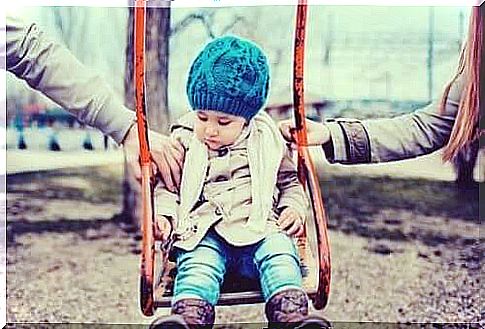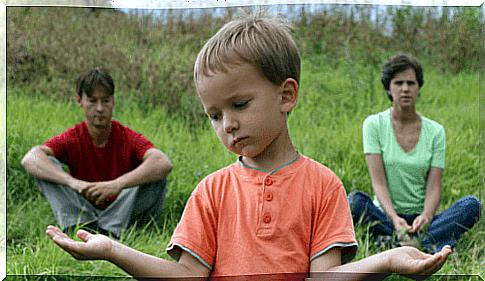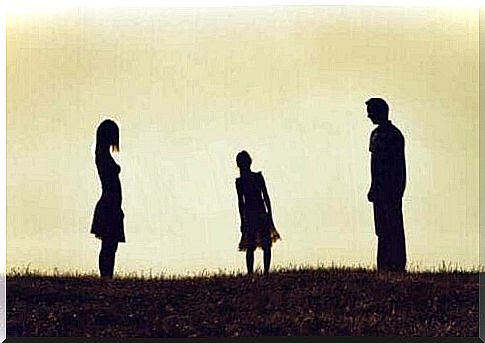Alternative For Togetherness And The Impact On The Children

A divorce is an event that can be very emotional and create mixed feelings. In this context, legal psychology places extra emphasis on these types of processes and how they affect children. When a couple divorces, there are many questions regarding the children. Who should they live with? When will they see the other parent? In short, how to choose between options for togetherness?
When it comes to shared or sole care, this is something that a psychologist can easily solve: Is shared care the best option? Can sole care for one of the parents have any effect on the child? Are there wellness differences between the two options?

Options for socializing: Shared or alone
Tejeiro and Gómez (2011) conducted a study entitled Divorcio, custodia y bienestar del menor: una revisión de las investigaciones en Psicología (In Norwegian: Divorce, togetherness and the child’s well-being: a revision of psychological investigations). The research showed that there are differences in well-being between children who are with both parents or one.
Both authors state what Bauserman (2002) stated after choosing 33 studies with the best parametric obligations. Children in shared parental responsibility were better adapted than those who were alone in the responsibility. He compared children with parents with shared responsibilities versus those who are still married parents.
Some of the differences between the care options are:
- Parents are more involved when they have shared care.
- There was less depression in families with shared care.
- Children with a parent had more emotional problems.
- There was more sibling revival and better self-esteem in children with shared care.
- It was a feeling of feeling rejected in children by single parents.
- Children had a better self-concept, and better placement of emotions and relationships where the parents have shared care.
However, other studies found that all the options for shared contact affected children’s emotional health.

The effects of shared care on the family
Shared care seems to be the best option not only for children but also for parents who are divorcing. This is the view of Marín Rullán (2015), who found that low levels of disagreement and higher levels of communication provide a better relationship with parents, and thanks to this, both have higher satisfaction than other parents.
The struggle between parents has a more negative effect on the children. Therefore, the children’s well-being depends on how the parents get along. Although people believe that shared togetherness is best for the child, it also means more contact between people and a deteriorating relationship. However, Tejeiro and Gómez also studied this variable and found that shared care made parents argue less.
Another concern of shared contact is forcing parents to see each other now and then, and not be able to heal open wounds. Studies suggest that this is just an unfounded fear. Thus, according to Pearson and Thoennes (1990), the distance between both parents tends to increase after two years, regardless of the type of care.
What happens to these families 12 years later?
This is what Emery, Laumann, Waldron, Sbarra, and Dillon (2001) asked themselves when they decided to see what happened in families who had chosen different togetherness. There were several conflicts between the parents where only one cared. Among the many conclusions they came to, the most interesting is that parents of children who are alone in caring were not interested in each other’s lives.
Similarly, these authors found that parents with shared care made several changes in life and therefore in the child’s life, but that this did not mean more conflict between the parents. This was linked to aspects such as flexibility and collaboration.

The effect on the minor’s adaptation to life
Bauserman and his meta-analysis Child Adjustment in Joint-Custody Versus Sole-Custody Arrangements: A Meta-Analytic Review , measures the levels of adjustment in children with parents with different forms of contact. Thus, the adjustment affects:
- Behavioral adjustment. Behavioral disorders.
- Emotional adjustment. Depression, anxiety, problems with self-control, self-concept, etc.,
- Self-esteem.
- Family relationships.
- School performance.
The fact that all these categories were better in the child where the parents have shared custody supports the theory that shared responsibility has a better impact on a child’s life.
Shared togetherness, favorable and convoluted
After a complicated and painful process, people begin to doubt what the best option is. Although parents seem to have the best interest in giving their child a normal life, they do not know how to manage shared care.
In this context, Marín Rullán seems to be very clear on something, how successful shared care is, depends on four factors. These are:
- Commitment and dedication, beyond what the court says.
- Support the other parent. To respect the bond between the other parent and the child.
- Flexible division of responsibilities.
- Mental traits. Being cooperative is a trait empathetic people have, less vulnerable and with a positive attitude.
In short, when we take into account the experiences of parents and children, the question is not child distribution. The question should be: How to give parents the skills they need to achieve good shared care?









